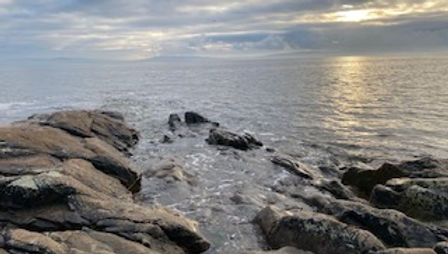What are health reviews of evidence all about?
A blog post from Derek Stewart reflecting on The People's Review. Derek is public partner and member of The People's Review Steering Group.

How do health reviews of existing evidence take place? Why are they needed? Who decides what gets reviewed? How are they done? And… how might the public get actively involved in deciding and learning and informing a health review?
The People’s Review is asking all those questions and more. It is exploring how to make health research more open, accessible, transparent and in many ways more democratised. The particular focus for the People’s Review is on systematic reviews and follows in the preceding footsteps of The People’s Trial, The Kid’s Trial and the Priority III Study supported by HRB Ireland. It fits nicely with Creating Our Future.
It is a genuine effort to discover whether it is possible to invite the public to ask a health question they would like to be reviewed; to enable public participation in the prioritisation decisions being made and also provide opportunities to learn throughout the systematic review process. It is powered by the public.
This is a shared endeavour into the unknown as to whether this is possible. Éle Quinn, the primary researcher, is doing this as part of her PhD research where the question will only be revealed as part of the enquiry rather than normally defined at the outset. It is imaginative, creative and therefore quite daunting.
It is not Patient, Public Involvement and Engagement (PPIE) in the usual sense of finding a couple of us to sit on a group where the purpose, process and agenda are already set; about hoping that our ‘experience’ might add value; or that our external perspective might improve the language of protocols or participant information leaflets. It is certainly not a box ticking exercise.
The People’s review began with the central principle that this should only be undertaken and achieved with the undisputed participation of members of the public as partners in all aspects of the study.
The public partners are authentic equals at the table rather than added personnel. This is collaborative enquiry-based discovery learning in real-time. Jerome Bruner, the educationalist describes this learning as more about sharing liquid from the jug of the learner’s experience and knowledge together with the educator. WB Yeats talks about learning as lighting the fire rather than filling the bucket. This is what makes this transformational more than transactional.
Nikita Burke’s paper – Sharing Space at the Research Table (1), rightly identifies the key features for making PPIE effective and meaningful. It is about bringing different perspectives to the table, making sense and making meaning on a complex and rigorous process that ensures a grounding in reality. It is clearly about reciprocity of learning from each other and our relationships. These amongst the other necessary supports regarding arrangements, payments were also in place for The People’s Review.
There was no need for a ‘safe-space’ for the public partners to meet separately but this would have been created it if had been necessary.
If, however, you start from the assumptions of joint ownership, collaborative effort then that primary researcher is facilitating the open discussion more than enabling just the public partners group discussion. Of course, it is vital that that the key features identified are being met not just at the outset but throughout.
The primary researcher is leading the enquiry-based or discovery learning as the ‘explorer’, the searcher. The steering group are supporting this enquiry – a series of open questions about whether the public can suggest areas for health reviews. It is a team of critical friends who come with different sets of knowledge, skills and experiences. It is about altering the make up of the orchestra rather than just adding a new choral section. One thing to note is that the group contained a mixture of old and new hands with involvement in reviews and trials methodology research helping always to expand interest and build capacity.
There is clear leadership from the primary researcher in terms of the structuring of the questions to develop and expand understanding, to be exploratory in nature yet investigative in manner. These are discussed to consider the benefits and possible spiralling consequences. Equally the stages and steps are carefully broken down as well as the actions required.
This has taken the team into website development, producing learning resources, considering visual images, producing animations, revelling in social media – all in order to make it as accessible as possible.
In the People’s Review we have the common purpose of all trying to make sense of health reviews – in the concept, practice, conduct, language, evidence gathering, etc. The playing field is almost level as it is the unknown for all of us.
On reflection, even in the early stages, The People’s Review is at its core asking about the actual ownership of the research agenda – what gets researched? Is it also asking all of us about belonging– how does research and reviews get done together with the public? Finally, is it profoundly asking about power and influence – whose research is it?
I certainly know and understand much more about health reviews, I am more keen and able to read a review which seems like quite a good reason given that most health research is funded by public donation or taxation. Ultimately it is ours, so having a say is important.
Image description: photo of the water lapping against the rocks in Salthill, Galway. Taken by Derek himself, during his most recent visit to Ireland.


